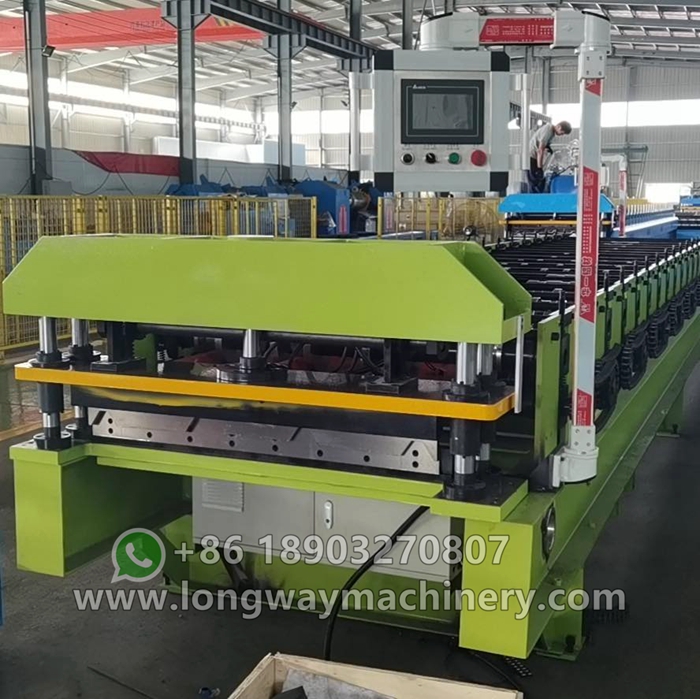Analyzing the Expenses of Roll Forming Machine Manufacturing Plants
Understanding the Cost of Roll Forming Machine Factories
Roll forming is a highly efficient manufacturing process used to create long sections of metal shapes, essentials in various industries, including construction, automotive, and consumer goods. As the demand for custom metal profiles rises, the question of the cost associated with roll forming machine factories becomes increasingly relevant for both entrepreneurs and established manufacturers. This article delves into various factors that influence the cost of roll forming machine factories, including initial investment, operational expenses, and potential return on investment.
Initial Investment
The initial investment in a roll forming machine factory involves the purchase of machinery, tooling, and factory space. The cost of roll forming machines can vary significantly depending on their capabilities, automation levels, and brand. Basic machines might be available for a few thousand dollars, while advanced, fully automated systems can exceed several hundred thousand dollars. Therefore, businesses must assess their production needs to select a suitable machine that balances cost and capability.
In addition to the machinery, companies must also consider the cost of tooling. Tooling includes the dies and other components required to shape the metal. Tooling costs can be substantial, particularly for customized profiles, as they often need to be designed and manufactured specifically for each application. Furthermore, these tools have a finite lifespan and will need replacement over time, adding to the cost of ownership.
Lastly, overhead costs related to factory space must be taken into account. The location of the factory can significantly impact real estate costs; urban areas, while potentially closer to customers, often have higher rental or purchase prices. Conversely, rural areas may offer cheaper space but could lead to increased shipping costs.
Operational Expenses
Operating a roll forming machine factory incurs various ongoing costs, including labor, maintenance, energy, and raw materials. Labor costs can vary based on the local labor market and the skill level of workers required for operations. Specialized operators trained in handling roll forming machines are essential and may demand higher wages.
Maintenance costs are another critical consideration, as roll forming machines require regular upkeep to ensure optimal performance. This includes both routine maintenance and unforeseen repairs. A lack of preventive maintenance can lead to costly downtime, negatively impacting production schedules and profitability.
cost of roll forming machine factories

Energy costs can also be substantial for roll forming plants, particularly as they often involve large machinery operating at high capacities. Factories in regions with high energy costs may find themselves at a competitive disadvantage unless they can effectively manage and optimize their energy usage.
Raw material costs fluctuate based on market conditions and can heavily impact profitability. Suppliers’ pricing, material availability, and transportation costs must be carefully monitored. Establishing strong relationships with suppliers can help mitigate some of these costs, allowing factories to negotiate better terms.
Return on Investment
Despite the potentially high costs associated with setting up and running a roll forming machine factory, the potential return on investment can be significant. The demand for roll-formed products is increasing due to their applications in numerous sectors, especially the construction industry. Factories that can produce high-quality, custom profiles efficiently stand to benefit from good profit margins.
Furthermore, advancements in technology, such as Industry 4.0 applications and AI, can improve productivity, reduce waste, and lower operational costs. Factories that embrace innovative technologies may find themselves ahead of the competition, leading to increased profitability.
Investors must conduct thorough market research and financial analyses to determine the viability of starting or expanding a roll forming machine factory. Understanding local market demands, potential customer bases, and industry trends will provide valuable insights into expected returns.
Conclusion
To summarize, the costs associated with roll forming machine factories can be substantial, involving initial investments, ongoing operational expenses, and strategic considerations. However, for those willing to navigate these challenges, the rewards can be significant. The growth potential in several key industries, coupled with advancements in technology, positions roll forming manufacturers for a prosperous future. Identifying the right balance between cost management and investment in quality processes and machinery is crucial for success in this dynamic manufacturing sector.
-
Key Features to Look for in a Roof and Wall Panel MachineNewsMay.23, 2025
-
Key Features of a Roller Shutter Door Forming MachineNewsMay.23, 2025
-
Key Features of a Purlin Roll Forming MachineNewsMay.23, 2025
-
Key Features of a Cut to Length & Slitting LineNewsMay.23, 2025
-
Benefits of Using a Downspout Gutter Forming MachineNewsMay.23, 2025
-
Advantages of Using a Steel Deck Floor Roll Forming MachineNewsMay.23, 2025
-
Revolutionize Your Gutter Production with a Gutter MachineNewsMay.23, 2025








